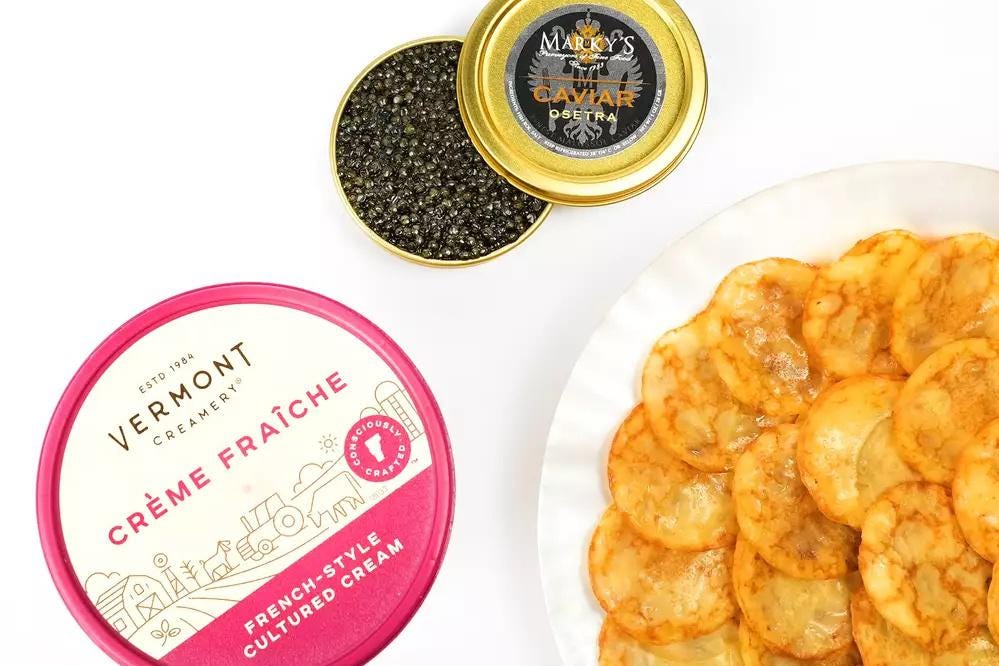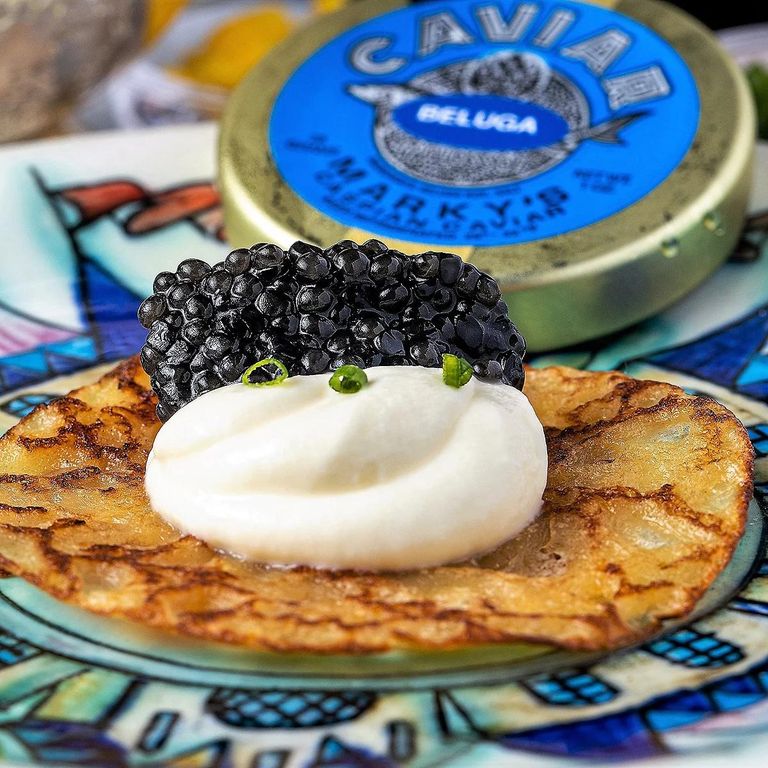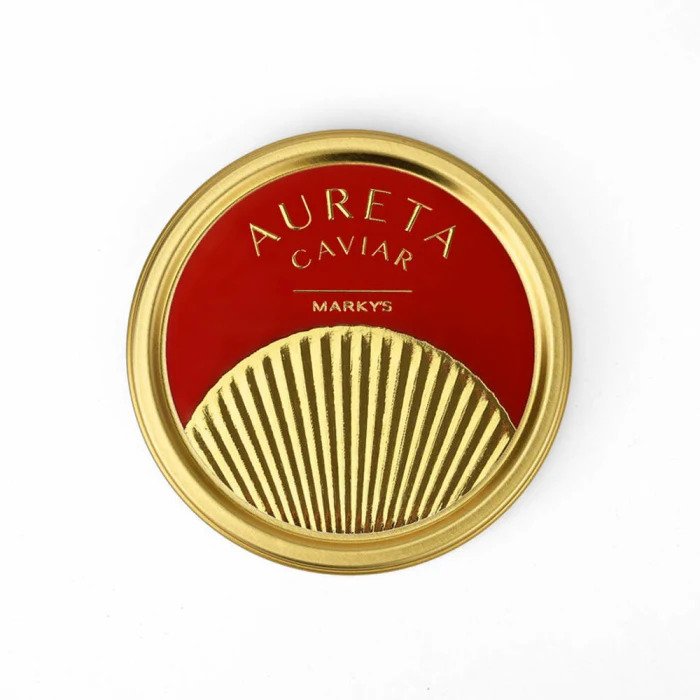Caviar dreams: There could be Florida-grown beluga in our future
Posted on Sun, Jul. 20, 2003
THE ETHNIC EXPLORER
Caviar dreams: There could be Florida-grown beluga in our future
BY LINDA BLADHOLM
STURGEON SAVERS: Tins of Russian beluga caviar from Marky's. DAVID ADAME/FOR THE HERALD
Mark Zaslavsky recently escorted five live beluga sturgeon on a flight from Frankfurt to Miami. The fish -- in individual, ice-packed boxes filled with oxygenated water -- were met by a truck and whisked to a holding facility near Orlando.
''I held my breath the first 48 hours and only relaxed when they were swimming and eating,'' Zaslavsky says.
As the president of Marky's, a caviar and gourmet food emporium in Miami, he is deeply involved in the world of sturgeon, the bony-plated fish native to the Caspian and Black seas that is prized for its delectable eggs.
Zaslavsky dreams of producing beluga caviar right here in Florida. To make that dream a reality, he has joined forces with University of Florida sturgeon expert Dr. Frank Chapman to create Sturgeon AquaFarms. Their hope is that farm-raising beluga will relieve pressure on the wild stock, which has been reduced by poachers since the breakup of the Soviet Union 12 years ago.
Zaslavsky has been pursuing his caviar dream for almost seven years with the help of partner Mark Gelman and researcher Natasha Akopian. He says the effort has cost about $25,000 so far, including $4,000 for the flight from Frankfurt.
Zaslavsky, a native of Ukraine, caught the five eight-pound fish with the help of local fishermen in the Black Sea near the mouth of the Danube River where Ukraine and Romania meet. He hired a Bulgarian truck driver to transport them to Frankfurt.
''In bringing beluga sturgeon to Florida, we hope to provide consumers with the authentic flavor of Russian caviar they crave while allowing our customers to make an environmentally responsible choice,'' he said.
 STURGEON SAVERS: Natasha Akopian, Mark Gelman and Mark Zaslavsky in their Miami showroom. DAVID ADAME/FOR THE HERALD
STURGEON SAVERS: Natasha Akopian, Mark Gelman and Mark Zaslavsky in their Miami showroom. DAVID ADAME/FOR THE HERALD
The aqua farm is being developed in north central Florida near Gainesville. By the time it is finished next year, Zaslavsky hopes to have brought in about 80 more sturgeon. (He could be barred from importing more fish if the U.S. Fish and Wildlife Service places beluga on the endangered species list, as it has been considering, but researcher Akopian says a recent increase in the census of wild beluga makes that unlikely.)
In the meantime, UF's Chapman will determine the gender of the first five fish via ultrasound in preparation for breeding. He and Zaslavsky expect the hatched fry of the brood stock to grow faster in Florida's warmer climate, reaching sexual maturity in perhaps three or four years rather than the six or seven years it takes in the beluga's cold native waters.
That's when all the work and dreaming will begin to pay off. Roe will be surgically removed from the females, who will be released to heal, grow and spawn another day. (Beluga can live to be 100.)
Until Florida's finest is available, Marky's would be happy to meet your caviar needs. (All caviar is called roe until it's cleaned and lightly salted.)
Beluga, the rarest and most expensive type, has large pale-to-dark-gray grains and a sweet, briny flavor. Ostera is the next grade, with a rich, almost nutty flavor. (Golden ostera has an amber hue and milder flavor due to the fish's diet.) Sevruga is the third jewel in the triple crown of caviar, with smaller, darker eggs and an intense flavor of the sea.
All caviar is best eaten from a mother of pearl spoon (metal taints the true flavor) or on a blini with a little crme frache. Some fans prefer caviar unadorned, while others serve it with melted butter, minced scallions, finely chopped hard-cooked egg (whites and yolks separate), sour cream and/or lemon wedges.
FLAVORED VODKA
Icy vodka is de rigueur between caviar nibbles. Here's how to make Anise Vodka, courtesy of Darra Goldstein's A Taste of Russia (Russian Life Books, $17.50):
Place 2 teaspoons whole anise seeds in 1 pint plain vodka and infuse at room temperature for 24 hours. Strain and store in the freezer untill ready to drink.
For a different flavor, use coriander seeds, peppercorns, saffron, lemon or orange peel or garlic and dill in place of the anise seeds.








